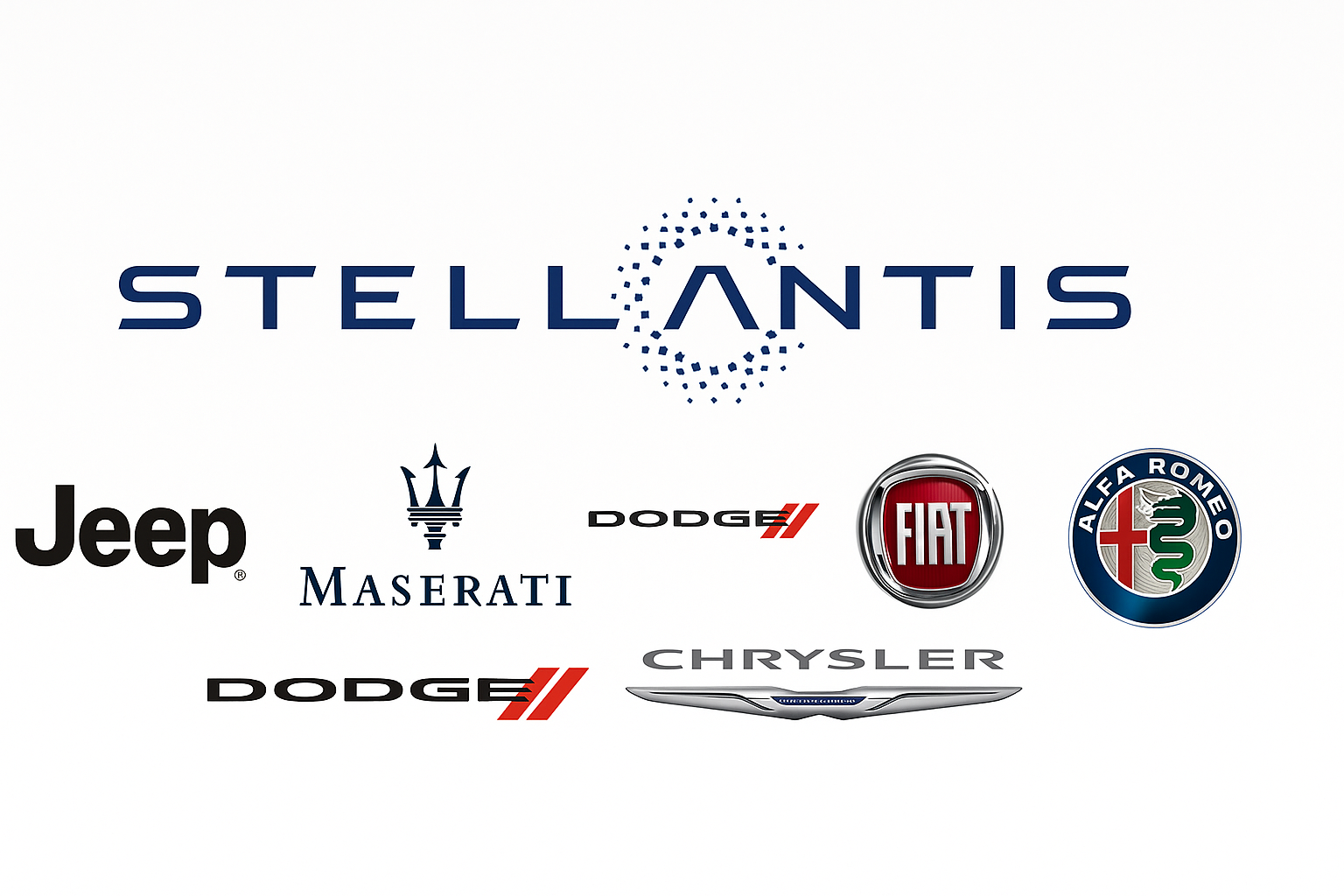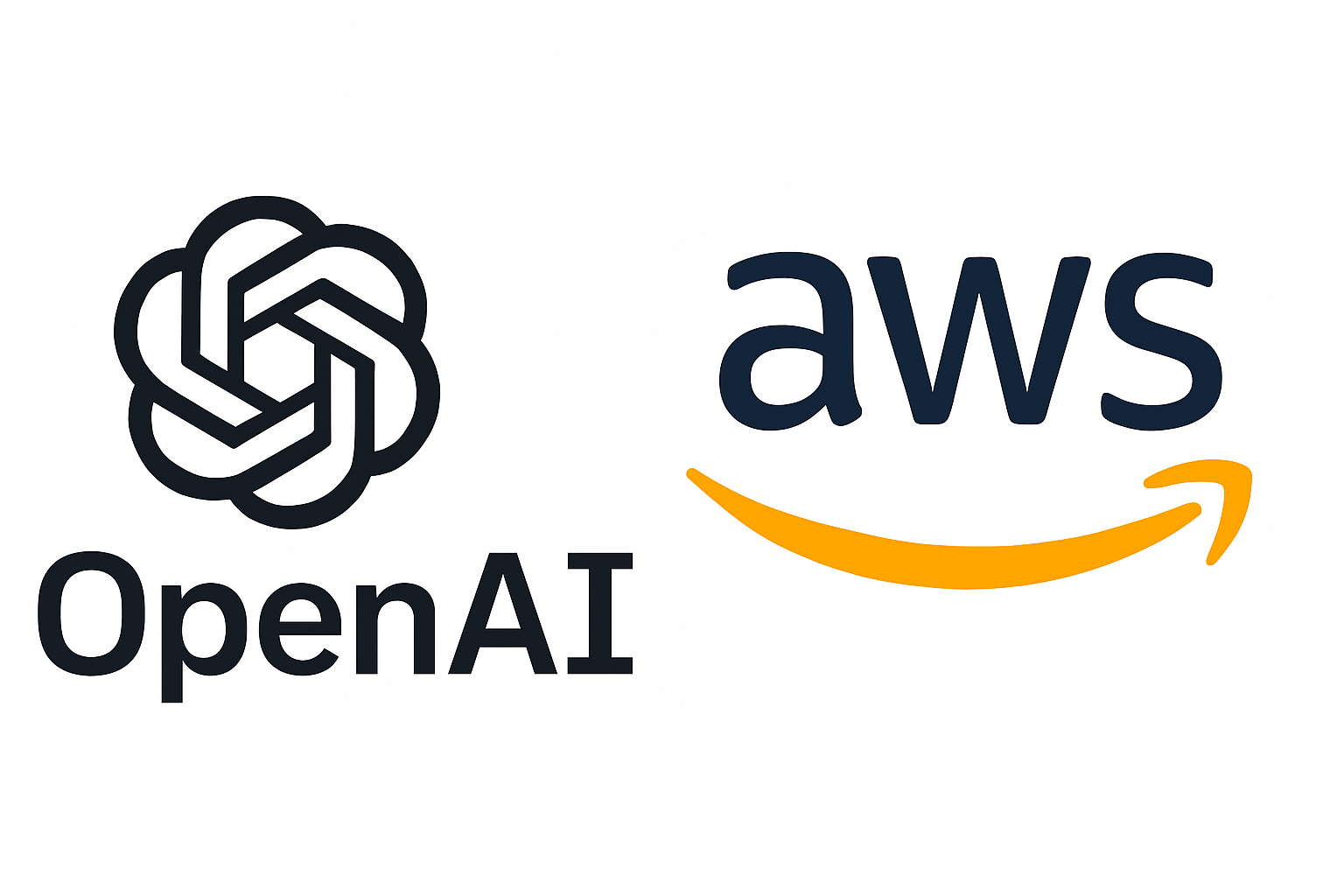Non classé
From Nodes to Networks: Graph RAG in Supply Chains – Part 5
Published
3 semaines agoon
By

Download the full white paper – AI in the Supply Chain
While Retrieval-Augmented Generation (RAG) improves the accuracy and relevance of AI output by connecting it to structured knowledge, it still treats that knowledge largely as disconnected chunks, pages, paragraphs, or entries retrieved for context. But supply chains are not flat; they are complex, interrelated systems composed of entities, suppliers, facilities, products, regulations, linked by dependencies, risks, and transactions.
To reason across this complexity, the next generation of AI systems integrates RAG with a knowledge graph, resulting in what’s now referred to as Graph RAG.
1. What Is Graph RAG?
Graph RAG combines:
RAG’s retrieval and generation capabilities
A knowledge graph, which models entities (e.g., a supplier, a warehouse, a contract clause) and the relationships between them (e.g., supplies, ships to, depends on, governed by)
Instead of retrieving and processing isolated documents, Graph RAG allows AI to:
Traverse structured relationships
Understand multi-hop dependencies (e.g., “Supplier A → Port B → Distribution Center C”)
Infer risks, consequences, or alternatives based on the shape of the supply network
It shifts AI from document-based reasoning to system-based reasoning.
2. Why Graph Structures Matter in Supply Chains
Supply chains are inherently graph-like:
A single supplier may support multiple products
A port delay affects many downstream orders
A regulation impacts specific trade lanes and product types
Transportation routes, warehouse transfers, and carrier networks form dynamic, high-dimensional graphs
Reasoning through these interconnections is essential to:
Identifying root causes (e.g., “Why is my lead time increasing?”)
Modeling cascading effects (e.g., “If Port Y is congested, how many SKUs are at risk?”)
Finding optimal alternatives (e.g., “Which alternate routes avoid this constraint?”)
Traditional AI systems, even with RAG, struggle to synthesize these answers. Graph RAG is built to navigate them naturally.
3. Applications of Graph RAG in Supply Chains
Disruption Analysis:
A weather event affects a port. The Graph RAG system identifies all inbound shipments, suppliers relying on that port, affected customers, and risk-adjusted mitigation options, automatically.
Strategic Sourcing:
By traversing supplier networks, component relationships, and geographic risks, the system recommends resilient sourcing strategies with minimal overlap or risk concentration.
Compliance Monitoring:
When a new trade regulation is issued, the system identifies which SKUs, suppliers, and trade lanes are affected, using graph traversal and targeted document retrieval.
Inventory Optimization:
Graph RAG helps balance multi-node inventory levels by modeling upstream-downstream interdependencies and lead time fluctuations across the network.
Carbon Emissions Modeling:
AI agents compute scope 3 emissions based on transport paths, vendor locations, and material movements, all modeled as a directed graph.
4. Architecture: How Graph RAG Works
Knowledge Graph Construction:
Nodes: Entities such as locations, shipments, contracts, or people
Edges: Relationships such as “ships to,” “depends on,” “complies with”
Data sources: ERP, TMS, WMS, procurement systems, regulatory bodies, supplier portals
Graph-Aware Retrieval:
Instead of searching flat documents, the AI traverses the graph to identify related nodes and fetches only the most relevant facts.
Context Injection into Generation:
Retrieved graph-structured facts are then passed to the language model, which generates a response that is not just informed, but relationally aware.
Ongoing Updates:
Graphs are continuously updated through APIs and event streams (e.g., a delayed container updates the edges related to dependent orders and downstream production).
Tools used may include:
Neo4j or Amazon Neptune for graph storage
LangChain, Haystack, or LlamaIndex for RAG orchestration
Vector databases (e.g., Pinecone, Weaviate) for parallel text-based retrieval
5. Key Benefits of Graph RAG
Holistic Insight: Understand system-wide impacts of localized disruptions
Explainability: Trace decisions across linked entities and interactions
Precision: Retrieve the exact information relevant to a network scenario
Scalability: Manage large-scale networks with millions of relationships
Proactivity: Identify risks, chokepoints, or opportunities before they escalate
6. Limitations and Design Considerations
Graph Construction Complexity: Requires a well-governed master data model and consistent entity resolution
System Integration: Must span across ERP, WMS, CRM, and external data feeds
Latency and Compute Load: Traversing large graphs in real time can be resource-intensive
Change Management: Stakeholders must trust a system making decisions across dozens of linked domains
Despite these hurdles, Graph RAG offers a substantial leap forward in AI’s ability to navigate the interconnected nature of modern supply chains.
Microsoft is incorporating graph-based models in its Copilot for Dynamics 365, enabling richer context in supply chain planning and customer service.
SAP Business AI has introduced early-stage graph traversal features for production planning and logistics scenario modeling.
Global logistics providers are experimenting with Graph RAG to assess port congestion impacts and reroute traffic across multimodal networks.
Graph RAG represents a convergence of structured reasoning and unstructured understanding, the first real step toward AI systems that don’t just answer questions but operate like experienced supply chain managers, constantly weighing options and interdependencies.
But this intelligence can’t operate in a vacuum. It depends on well-prepared data and unified system infrastructure, which brings us to the topic of data harmonization.
[Download AI in the Supply Chain](https://logisticsviewpoints.com/download-the-ai-in-the-supply-chain-white-paper/)
The post From Nodes to Networks: Graph RAG in Supply Chains – Part 5 appeared first on Logistics Viewpoints.
You may like
Non classé
Join us for Tomorrow’s Webinar: Building a Sustainable Supply Chain: Turning Commitments into Competitive Advantage
Published
18 heures agoon
3 novembre 2025By

Sustainability has moved beyond corporate responsibility. Today, it’s a core element of supply chain performance and brand value. Organizations across every sector are rethinking how materials are sourced, products are moved, and data is managed to reduce emissions, improve efficiency, and strengthen resilience.
Join us for an in-depth Logistics Viewpoints webinar on Sustainability in the Supply Chain, where industry leaders will share how they are embedding environmental and social responsibility into the fabric of their operations. This session will explore practical steps for achieving measurable progress — not just pledges — in areas such as supplier engagement, energy management, and circular logistics.
Key topics include:
Proven frameworks for integrating sustainability into procurement and manufacturing
Tools and metrics for tracking emissions and improving data visibility
How transparency and collaboration can reduce risk and enhance competitiveness
Lessons learned from companies leading the charge toward carbon-smart logistics
Our expert panel will focus on real-world case studies and actionable takeaways, giving attendees insights they can immediately apply to strengthen their sustainability programs.
Whether your organization is just beginning its journey or refining an established strategy, this webinar offers a roadmap to align sustainability goals with measurable business outcomes.
Register now to join us live and learn how forward-thinking companies are transforming sustainability from a compliance obligation into a competitive advantage.
The post Join us for Tomorrow’s Webinar: Building a Sustainable Supply Chain: Turning Commitments into Competitive Advantage appeared first on Logistics Viewpoints.
Non classé
Stellantis: $13 Billion, 5,000 Jobs, and a New U.S. Manufacturing Strategy, Reshaping the North American Supply Chain
Published
18 heures agoon
3 novembre 2025By

AUBURN HILLS, MI. Stellantis announced plans to invest $13 billion over the next four years to expand its U.S. manufacturing footprint. The initiative will add more than 5,000 jobs across Illinois, Ohio, Michigan, and Indiana and increase U.S. vehicle production by about 50 percent.
The investment will fund five new vehicle programs, 19 product refreshes, and a new four-cylinder engine program. It is the company’s largest single U.S. investment and signals a long-term commitment to both internal combustion and electrified vehicle platforms.
“This investment in the U.S. will drive our growth, strengthen our manufacturing footprint, and bring more American jobs to the states we call home,” said Antonio Filosa, Stellantis CEO and North America COO. “As we begin our next 100 years, we are putting the customer at the center of our strategy, expanding our vehicle offerings, and giving them the freedom to choose the products they want and love.”
“Accelerating growth in the U.S. has been a top priority since my first day,” Filosa added. “Success in America is not just good for Stellantis in the U.S. It makes us stronger everywhere.”
State-by-State Overview
Illinois: Belvidere Plant Reopening
Stellantis will invest $600 million to reopen the Belvidere Assembly Plant for production of two Jeep models, the Cherokee and Compass, beginning in 2027. The project is expected to create 3,300 jobs.
Ohio: New Midsize Truck Production
About $400 million will fund production of an all-new midsize truck at the Toledo Assembly Complex, joining the Jeep Wrangler and Gladiator lines. The move will add about 900 positions when production begins in 2028. Additional upgrades are planned across Toledo operations to support ongoing Jeep production.
Michigan: Large SUV and Dodge Durango Successor
At the Warren Truck Assembly Plant, Stellantis will invest $100 million to produce a new large SUV available in both range-extended EV and combustion formats. The launch, expected in 2028, will add 900 jobs. Another $130 million will prepare the Detroit Assembly Complex, Jefferson, for the next-generation Dodge Durango, slated for production in 2029.
Indiana: New Engine Program
In Kokomo, Stellantis will invest more than $100 million to build the new GMET4 EVO four-cylinder engine. Production is set to begin in 2026 and will add about 100 jobs.
Supply Chain and Logistics Considerations
The Stellantis plan reflects a larger trend toward regionalized manufacturing and shorter supply chains. By expanding production in the Midwest, Stellantis is reducing exposure to overseas logistics risks and shipping delays that have challenged the industry in recent years.
Reopening Belvidere and expanding operations in Toledo and Kokomo will strengthen domestic supplier ecosystems for components such as engines, drivetrains, and electronics. Adding dual powertrain lines, both EV and ICE, will require parallel material streams and more sophisticated synchronization between inbound logistics, supplier planning, and workforce scheduling.
At the same time, expansion across multiple states increases the complexity of coordination and sourcing. Tier-1 suppliers will need to adjust production capacity, labor allocation, and transportation networks to align with Stellantis’ new programs. Global lead times for critical components such as semiconductors, battery modules, and sensors remain unpredictable, requiring early-stage visibility and contingency planning.
For the broader supply chain, the challenge lies in maintaining steady component availability while scaling new vehicle lines and managing cost pressures tied to both traditional and electrified platforms.
Outlook
Stellantis operates 34 U.S. facilities across 14 states and employs more than 48,000 people. This new investment deepens that footprint and aligns with an operational goal of building greater resilience and control within the domestic production network.
For supply chain leaders, Stellantis’ move highlights the continued shift toward regional production, flexible sourcing strategies, and closer collaboration between OEMs and their supplier networks. The focus now is not just on capacity but on stability, adaptability, and execution across interconnected plants and partner
The post Stellantis: $13 Billion, 5,000 Jobs, and a New U.S. Manufacturing Strategy, Reshaping the North American Supply Chain appeared first on Logistics Viewpoints.
Non classé
OpenAI and AWS Forge $38B Alliance, Microsoft Exclusivity Ends, New Multi-Cloud AI Compute Era Begins
Published
18 heures agoon
3 novembre 2025By

OpenAI has entered into a multi-year, $38 billion agreement with Amazon Web Services, formally ending its exclusive reliance on Microsoft Azure for cloud infrastructure. The deal, announced today, represents a fundamental realignment in the cloud compute ecosystem supporting advanced AI workloads.
Under the agreement, OpenAI will immediately begin running large-scale training and inference operations on AWS, gaining access to hundreds of thousands of NVIDIA GPUs hosted on Amazon EC2 UltraServers, along with the ability to scale across tens of millions of CPUs over the next several years.
“Scaling frontier AI requires massive, reliable compute,” said Sam Altman, OpenAI’s CEO. “Our partnership with AWS strengthens the broad compute ecosystem that will power this next era.”
A Structural Shift Toward Multi-Cloud AI
This marks the first formal infrastructure partnership between OpenAI and AWS. Since 2019, Microsoft has provided the primary compute backbone for OpenAI, anchored by a $13 billion investment and multi-year Azure commitment. That exclusivity expired earlier this year, opening the door to a multi-provider model.
AWS now becomes OpenAI’s largest secondary partner, joining smaller agreements already in place with Google Cloud and Oracle, and positioning itself as a co-equal pillar in OpenAI’s global compute strategy.
“AWS brings both scale and maturity to AI infrastructure,” noted Matt Garman, AWS CEO. “This agreement demonstrates why AWS is uniquely positioned to support OpenAI’s demanding AI workloads.”
Infrastructure Scope and Deployment
The deployment will include clusters of NVIDIA GB200 and GB300 GPUs linked through UltraServer nodes engineered for low-latency, high-bandwidth interconnects. The architecture supports both model training and large-scale inference, applications such as ChatGPT, Codex, and next-generation multimodal systems.
AWS has already begun allocating capacity, with full deployment expected by late 2026. The framework also includes options for expansion into 2027 and beyond, giving OpenAI flexibility as model complexity and usage continue to grow.
Continued Microsoft Collaboration
Despite the AWS deal, OpenAI maintains its strategic and financial relationship with Microsoft, including a separate $250 billion incremental commitment to Azure. The move reflects a deliberate multi-cloud posture, a strategy increasingly favored by large-scale AI developers seeking to balance cost, access to specialized chips, and platform resiliency.
Implications for Supply Chain and Infrastructure Leaders
This announcement underscores several macro-trends relevant to logistics and industrial technology executives:
AI Infrastructure Is Becoming a Supply Chain of Its Own
Cloud capacity, GPUs, and networking fabric are now constrained global commodities. Long-term compute contracts mirror procurement models traditionally seen in manufacturing or energy, locking in scarce resources ahead of demand.
Multi-Cloud Neutrality Reduces Vendor Lock-In
The shift toward multiple cloud providers parallels how diversified sourcing reduces single-supplier risk. Expect enterprise buyers to apply similar logic when procuring AI infrastructure and software services.
Operational AI at Scale Requires Cross-Vendor Interoperability
As companies like OpenAI distribute workloads across ecosystems, interoperability standards, ranging from APIs to data-plane orchestration, will become critical for continuity, performance, and governance.
CapEx Discipline Returns to the Forefront
With multi-year AI compute deals now exceeding $1.4 trillion in aggregate commitments across the sector, CFOs and CIOs are under pressure to evaluate utilization efficiency and long-term ROI of their AI infrastructure spend.
Broader Market Context
AWS’s win follows similar capacity expansions with Anthropic and Stability AI, but this partnership represents its highest-profile AI infrastructure engagement to date. It also signals that OpenAI intends to maintain independence in its technical roadmap, balancing strategic investors with diversified operational suppliers.
The timing is notable: OpenAI recently restructured its governance model to simplify corporate oversight, a move analysts interpret as preparation for a potential IPO that could value the company near $1 trillion.
AWS stock rose approximately 5 percent following the announcement, reflecting investor confidence in the long-term demand for AI-class compute.
Outlook
For the logistics and manufacturing sectors, the implications extend beyond software. The same GPU-based data centers that train language models are also powering digital twins, simulation models, and optimization engines increasingly embedded in supply chain planning.
As hyperscalers compete for AI workloads, enterprises should expect faster innovation in distributed computing, lower latency connectivity, and new pay-as-you-go models designed for AI-intensive industrial applications.
Summary
The $38 billion OpenAI–AWS partnership marks a decisive end to Microsoft’s exclusivity and a broader normalization of multi-cloud AI ecosystems.
For technology and supply-chain leaders, it serves as a reminder: compute itself has become a strategic resource, one that must now be sourced, diversified, and managed with the same rigor once reserved for physical inventory.
The post OpenAI and AWS Forge $38B Alliance, Microsoft Exclusivity Ends, New Multi-Cloud AI Compute Era Begins appeared first on Logistics Viewpoints.


Join us for Tomorrow’s Webinar: Building a Sustainable Supply Chain: Turning Commitments into Competitive Advantage

Stellantis: $13 Billion, 5,000 Jobs, and a New U.S. Manufacturing Strategy, Reshaping the North American Supply Chain

OpenAI and AWS Forge $38B Alliance, Microsoft Exclusivity Ends, New Multi-Cloud AI Compute Era Begins
Ex-Asia ocean rates climb on GRIs, despite slowing demand – October 22, 2025 Update

Walmart and the New Supply Chain Reality: AI, Automation, and Resilience
Unlocking Digital Efficiency in Logistics – Data Standards and Integration
Trending
- Non classé2 semaines ago
Ex-Asia ocean rates climb on GRIs, despite slowing demand – October 22, 2025 Update
-

 Non classé8 mois ago
Non classé8 mois agoWalmart and the New Supply Chain Reality: AI, Automation, and Resilience
- Non classé12 mois ago
Unlocking Digital Efficiency in Logistics – Data Standards and Integration
-

 Non classé3 mois ago
Non classé3 mois agoSupply Chain and Logistics News August 4th – August 7th 2025
-

 Non classé3 mois ago
Non classé3 mois agoBlue Yonder Acquires Optoro to Revolutionize Returns Management
-

 Non classé7 mois ago
Non classé7 mois agoAmazon and the Shift to AI-Driven Supply Chain Planning
-

 Non classé1 an ago
Non classé1 an agoHow Many Warehouses Does the US Have? Nobody Knows
-

 Non classé5 mois ago
Non classé5 mois agoDifferentiating Home Delivery: The Gen Z Factor
